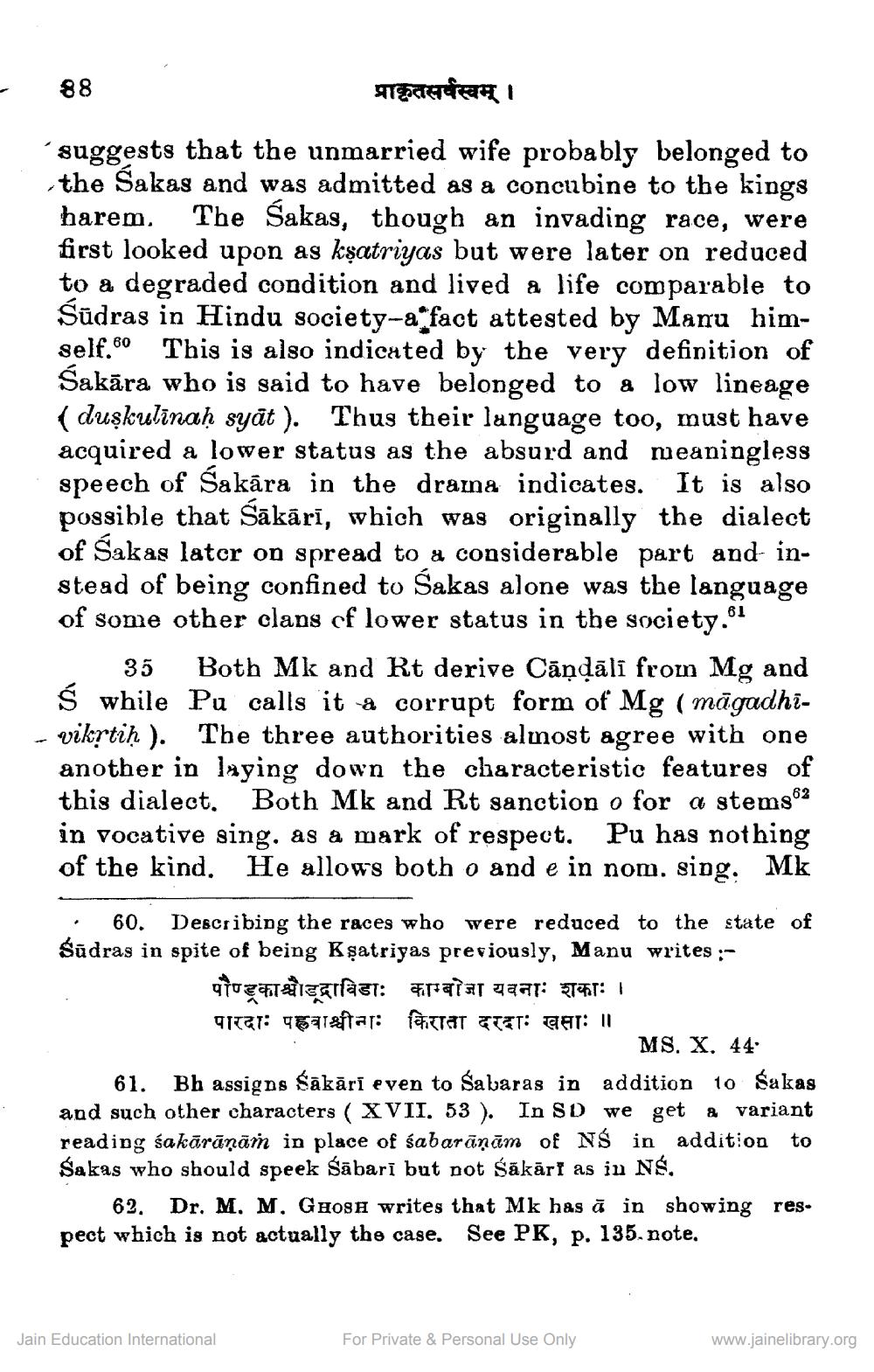________________
88
प्राकृतसर्वस्वम् ।
suggests that the unmarried wife probably belonged to the Śakas and was admitted as a concubine to the kings harem. The Sakas, though an invading race, were first looked upon as ksatriyas but were later on reduced to a degraded condition and lived a life comparable to Sūdras in Hindu society-a fact attested by Maru himself.60 This is also indicated by the very definition of Sakāra who is said to have belonged to a low lineage (duşkulinaḥ syāt ). Thus their language too, must have acquired a lower status as the absurd and meaningless speech of Sakāra in the drama indicates. It is also possible that Sākārī, which was originally the dialect of Sakas later on spread to a considerable part and instead of being confined to Śakas alone was the language of some other clans of lower status in the society.
35 Both Mk and Rt derive Cāņdāli from Mg and Ś while Pu calls it a corrupt form of Mg ( māgadhi- vikrtiḥ ). The three authorities almost agree with one
another in laying down the characteristic features of this dialect. Both Mk and Rt sanction o for a stems62 in vocative sing, as a mark of respect. Pu has nothing of the kind. He allows both o and e in nom. sing. Mk
. 60. Describing the races who were reduced to the state of Sūdras in spite of being Bșatriyas previously, Manu writes :
पौण्डकाश्चौड्द्राविडाः काम्बोजा यवनाः शकाः । Prat: 46sftar: Pattat TTT: Car: 11
MS. X. 44 61. Bh assigns Sākārī even to Sabaras in addition to Šakas and such other characters ( XVII, 53 ). In SD we get a variant reading sakārāņāṁ in place of sabarāņām of Nś in addition to Sakas who should speek Šābarī but not Śäkārt as in Nś.
62. Dr. M. M. Ghosh writes that Mk has ā in showing res. pect which is not actually the case. See PK, p. 135. note.
Jain Education International
For Private & Personal Use Only
www.jainelibrary.org




